Picatinny vs M-LOK: Which is better?
Attachment systems on firearms are a vital part of any firearm, not just the AR platform. The receiver of a rifle has an attachment system, an M249 handguard is now an attachment system, the bottom of a pistol frame is an attachment system. They all serve the same purpose though, allowing the user to put something on the gun that hopefully..doesn’t move or fall off. In this article, we will look at the origins and differences of Picatinny vs. M-LOK.

So where does that put us? Well, it puts us in decades of dispute as to “what attachment system is better”. Not only us, but the military joined the fight as well. These two very trustworthy attachment systems have allowed both civilians and the military to attach optics, lasers, and lights onto their firearms without them moving. We will also go over the importance of knowing your specific attachment system and lay out some Gunsmith tips and tricks to mount your accessories on these systems properly.
Don’t worry, after you read this article, you too can enter yet another firearm debate. Yay!
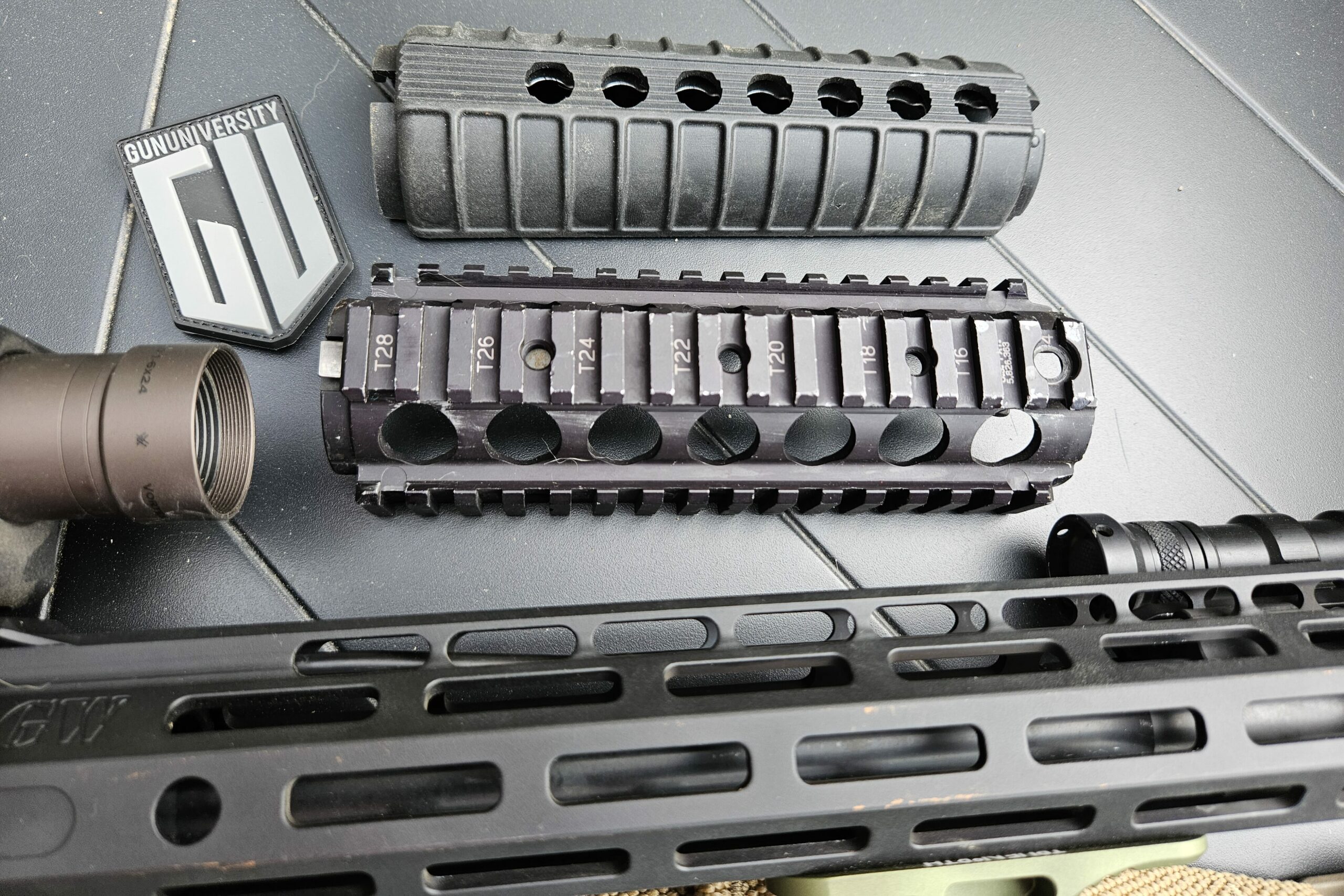
Origins and Current History
As far as what came first, the Picatinny mounting system, later standardized by the Military as MIL-STD1913, came much, much before the Modular Lock (M-LOK) system from Magpul. However, both are still being used heavily today. The Picatinny mount, named after Picatinny Arsenal, has become an open source and Magpul’s M-LOK has allowed for a license to be obtained from Magpul if any other companies want to use it. Freedom in design allows for vast improvements and advances in firearm engineering, so thank you for that.
Picatinny
Now for chicken and the hen..what came first: C. Reed Knight Jr.’s invention of the Knights Armament Quad Rail or Picatinny from Picatinny Arsenal? The story of how the Knights Armament Rail Integrated System (RIS) influenced the Government to invent Picatinny is here, and it is quite entertaining and eye opening. You decide for yourself. Focus on the part where Mr.Knight allowed military folk to go from taping a flashlight onto their gun with duct tape, to giving us a quad rail and modular methods to attach foregrips and lights.
Anyway..no matter what came first, the very heavily used Rail Adapter System (RAS) from Knights Armament now has the Picatinny interface.
That Picatinny interface being given to us officially by Picatinny Arsenal and engineered by Gary Houtsma. More information on that here.
M-LOK
The origins of M-LOK go back to 2007 with the Masada Concept Rifle. This rifle, designed by Magpul, featured three slots in the front that allowed for the mounting of an accessory. This then leads to Magpul’s MOE line, which is still a very popular line of lightweight handguards. However, the M-LOK design wasn’t quite there due to needing to take the handguard off to mount anything to it. Yikes. Now, we have M-LOK, standing for Modular Lock. The rail slot shapes were adjusted and squared off and the mounting hardware was also changed a bit. More information on the history, specs, and how to install can be found here in a Magpul Press Release on M-LOK uploaded online by Giessele.
M-LOK is now being produced by almost every large firearm manufacturer and is being adopted by various military and Federal entities.
You will see in our best AR-15 handguards article we suggest both M-LOK and picatinny options.

Designs and Pro’s/Con’s
The design for the two systems are very different. You will often be able to tell right away when looking at a hand rail or an accessory that mounts to a rail which system that product is designed for.
Picatinny
The picatinny mounting system is a slotted and clamping type of system. The rail has individual slots often marked with numbers. That way, you can remember where your accessory was mounted if you need to take it off and remount it. Your accessory will have a bar on the mounting plate that fits into those slots. On the side of the mounting plate, there will also be a locking/clamping type of bar. Place your accessory in your chosen slot and tighten down the locking screw, which then tightens the clamping bars to the side of the rail. Therefore, not only is there a bar accepting recoil but also clamps on the side of the rail.
- Common – Picatinny is still everywhere, even though it is forty years old. Look at a receiver of any AR platform or the newest hand rail of a M249, picatinny. Look at a lot of lasers and lights that are meant to mount on the side of a rifle. They will often have a picatinny plate already on the laser.
- Quick Detach Options – Picatinny is prevalent in allowing quick detach accessories, such as accessories with a tensioning lever, to make it easy to take on and off of accessories.
- Versatile – Now Picatinny is even being used in the archery world, to mount sights to bows.
- Simple – It is super simple to use. Simply fit the mount into a slot and tighten.
- Strength – The system is also strong. Get a dent or hit to the rail and your accessories should still hold. Why else would they would still use it as the main system for mounting an optic? Something that needs to hold zero always.
- Nock Offs – It is also everywhere, which means that some company may not be following proper MIL-STD1913 specifications. The more slop in those specifications means more movement to your accessory in the middle of those slots.
- Height – It also pushes your optics even higher and more outwards due to needing that rail space that the sides of the rail clamps onto.
- Bulky – it is pretty bulky. Wrapping small hands around a quad rail with picatinny on each side of the rail can be tough.
- Rough Texture – Picatinny slots can be like a cheese grater on your bare skin if left uncovered
- Heavy – All of the extra material that makes the rail system strong, also makes it heavy
Note: There is a similar design to Picatinny that is called “Weaver”. It is easy to get these two confused, however, they are different mounting surfaces. Ensure that if you are looking at a rail similar in nature to picatinny, verify which specification it actually is.
M-LOK
The Modular Lock System from Magpul is a bit more complicated, but still simple to use. The slots on the rail look like skinny ovals. A M-LOK mounting accessory now has two screws with a similar shaped type of lock nut. The lock nut stays on the screws at all times. Turn the screws so that the nut can fit through the slot. Now, turn the screws again so that the nuts are perpendicular to the slot. Now tighten. The nuts clamp onto the inside of the rail and tighten down your accessory as you tighten down your screws. Bam, your M-LOK accessory is now mounted onto the M-LOK rail.
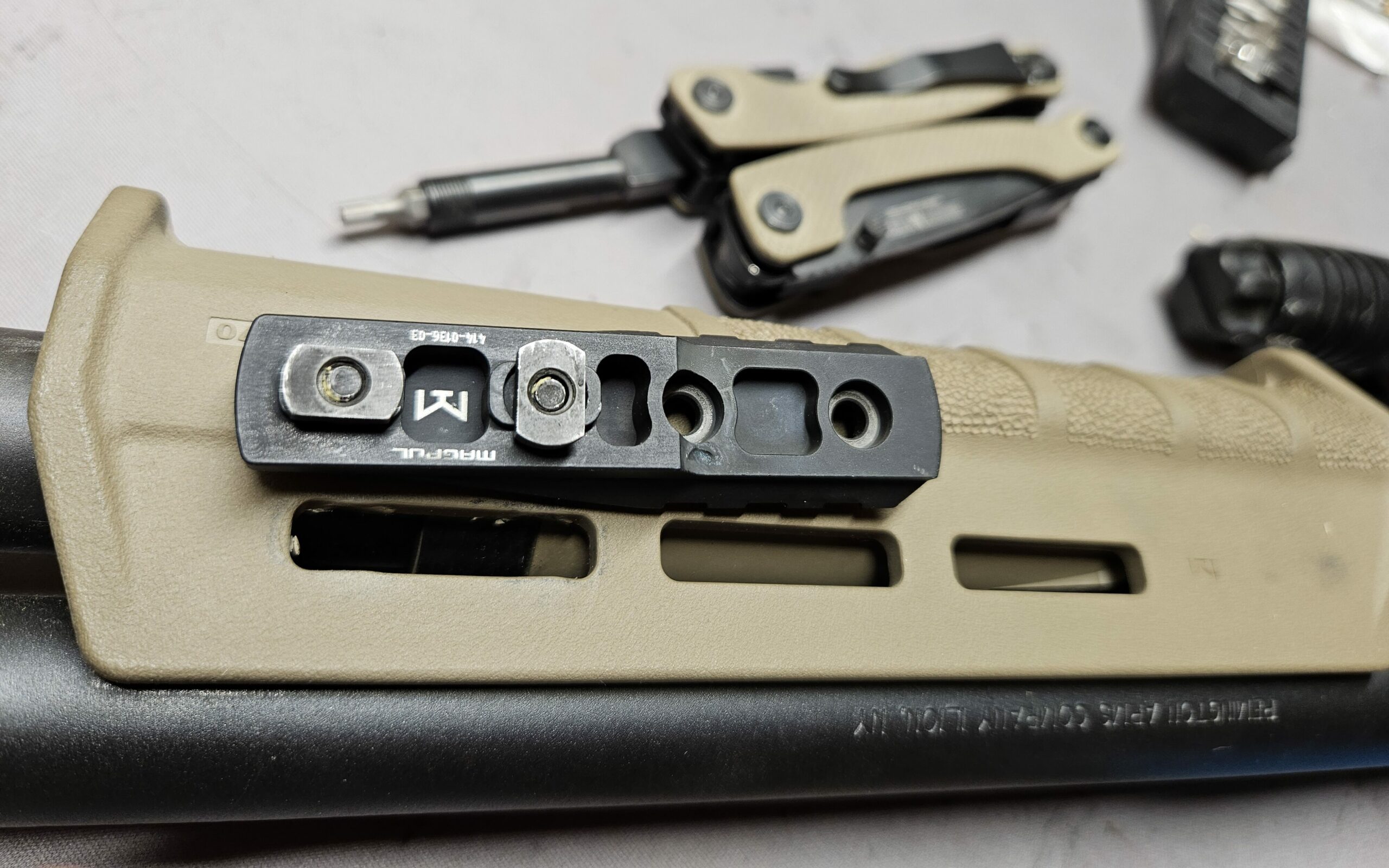
- Negative Space – Alright I’m going to say it..negative space. Are you turned on yet? You should be, because this term is what will pop up in any google search you do on M-LOK due to being of such importance within Mil-Requirements when designing and delivering M-LOK. Really though, it is a huge pro. It makes rails much less bulky due to not having to add anything to the rail to make the system but instead, cutting out holes
- Weight – Less bulk also means less weight. Something that someone like myself, a small female with small hands and not as many muscles as you big boys, loves in a hand rail.
- Direct Mount – Accessories are able to be directly mounted to the rail, thus not adding any bulk to the accessory and ensuring that it stays tight to the rail.
- Slim – The more slots, the more places that accessories can be mounted. M-LOK allows for multiple different places for accessories to be mounted without adding the bulk of more material.
- Learning Curve – M-LOK is a little more difficult to get the hang of and there are more parts to lose. However, once you get the trick of knowing when to twist the screws so that the nuts latch onto the rail and how to pull up when tightening, ensuring that those nuts don’t move, it’s easy peasy. Just make sure you don’t lose a nut inside the gun..speaking for a friend..wink wink.
- Nock Offs – While all things M-LOK are supposed to be licensed as well, there are still some crap options out there, such as plastic rail sections and incorrectly sized M-LOK pieces. This can make installation a pain. Ensure that any M-LOK product you get has the M logo on it from Magpul and isn’t plastic. Just stay away from non-aluminum rail sections, you’ll thank me later.
The Importance of Knowing Your Locking System
So why do we care? Well, any type of accessory that you buy will need to be compatible with the system that you’re mounting it to.

Optics that are being mounted on the top rail are pretty easy considering most top rails of firearms are 1913 picatinny. At this point, you just need to decide the height of the mount of your optic that you want, and if you want it to be attached with a tensioning lever, screws, or locking lugs.
Other accessories get a little more tricky. For instance, some accessories that you buy if you do not buy an adapter will only be able to be mounted onto picatinny. Thus, if you have a M-LOK handguard, you will then need to buy a picatinny section and mount it onto your handguard. If you do find the same accessory in M-LOK, buy that. Direct mounting on anything is always better than allowing for two things to come loose.
“I remember being at Fort Benning one year, and I was there with a group of people, and this sergeant came up to me, he said, “You’re Reed Knight, aren’t you?” I said, “Yeah, I am.” He said, “I just want to shake your hand,” he said, “I train thousands of people here in basic training in the shooting skills, and every time I get a shooter that does not qualify, I can give them one of your vertical pistol grips, and they always qualify afterwards. That one piece of gear has made more difference in people qualifying in military shooting than any other piece of gear that I’ve ever seen come through here.”-Mr. Knight
quote about that foregrip from an Interview with Mr. Knight on SmallArmsReview
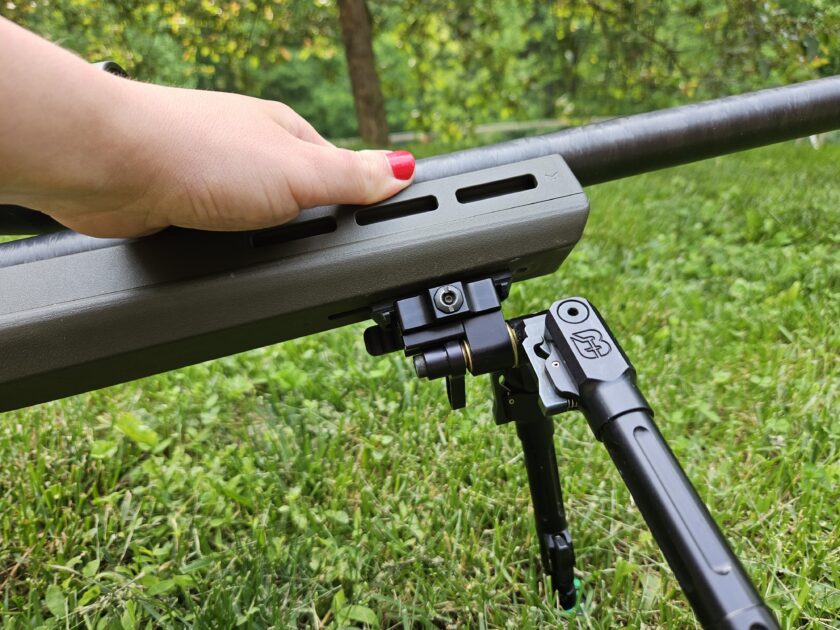
Things such as bipods that you may want to become quick detach (QD) also create some issues. Depending on your bipod, you may need to buy a Picatinny or M-LOK adapter that is compatible with your specific bipod. Many of these QD adapters, such as this one from American Defense Manufacturing, will only release from Picatinny so another section may need to be bought. If you don’t care for your bipod to be quick detach, simply buy a M-LOK Bipod Mount such as this one from Magpul.
In simple terms, the three things that you need to know is, what mounting system is my handguard? What mounting system does my bipod currently attach to? What system do I want it to be attached to? At that point, simply input those terms into google and you should find information for it.
Tips for Mounting Hardware
- When mounting optics onto the top picatinny rail add some lubrication to the rail, this will help with friction and keeping the optic tight.
- Push forward (to the muzzle of the gun) on your accessory when mounting. This will help with recoil and keeping the accessory tight.
- Witness mark your screws. This means that after tightening everything down, take a paint pen and mark on the screws and your rail in a line. This will show you if anything moves before you lose your accessory in the grass or wonder why you aren’t hitting where your optic says you should.
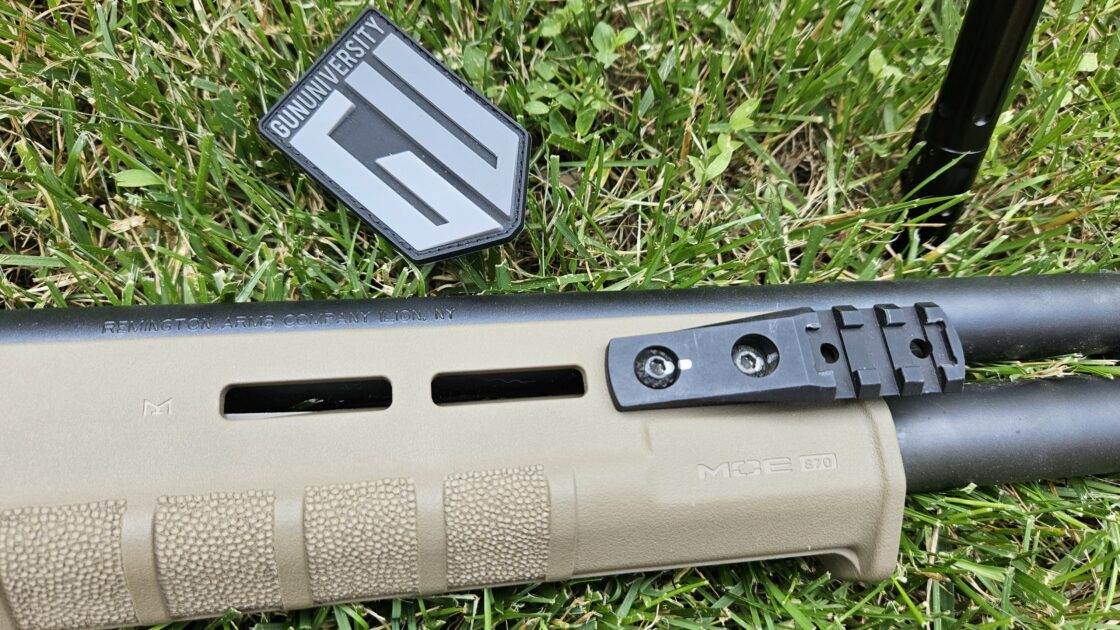
- If you are using a tensioning lever instead of screws, ensure that you adjust the lever so that it is TIGHT. Like so tight that you need to pull on it with paracord to loosen it and release the lever because your fingers aren’t strong enough (trust me it’s a trick). Too loose of a lever means your accessory will come loose during recoil.
- Vibra-tite or Loctite 242 are your friends. These are types of threadlocker that work great with items mounted on a firearm and undergoing recoil.
- Use the correct sized bit for the screws on your accessory. These screws and bits are often small, thus if you don’t use the correct size the screws and the bit can easily be stripped.
Recent Posts
September 28, 2025
September 27, 2025
September 27, 2025
September 25, 2025

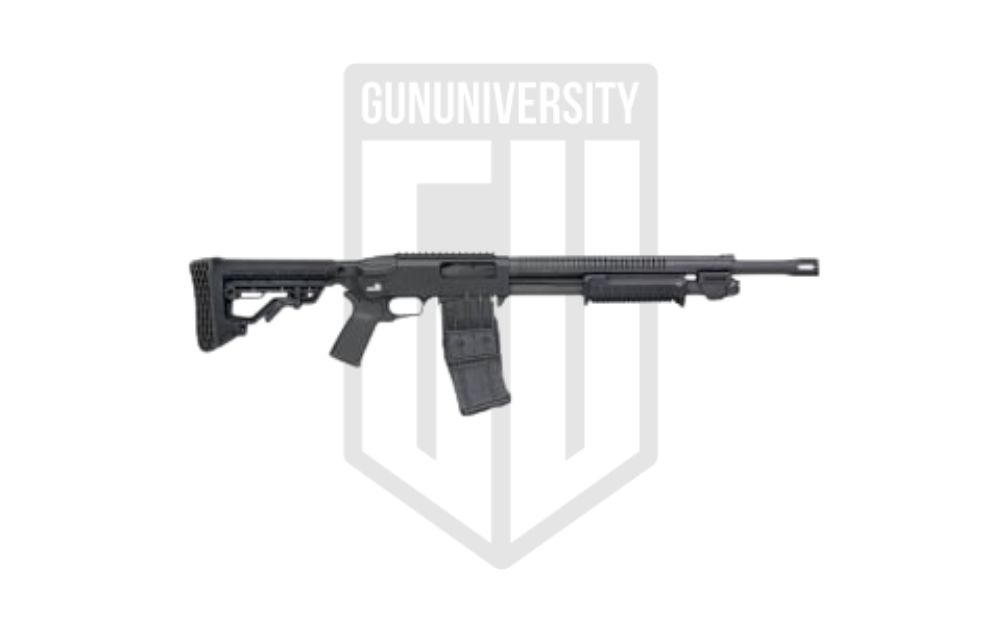
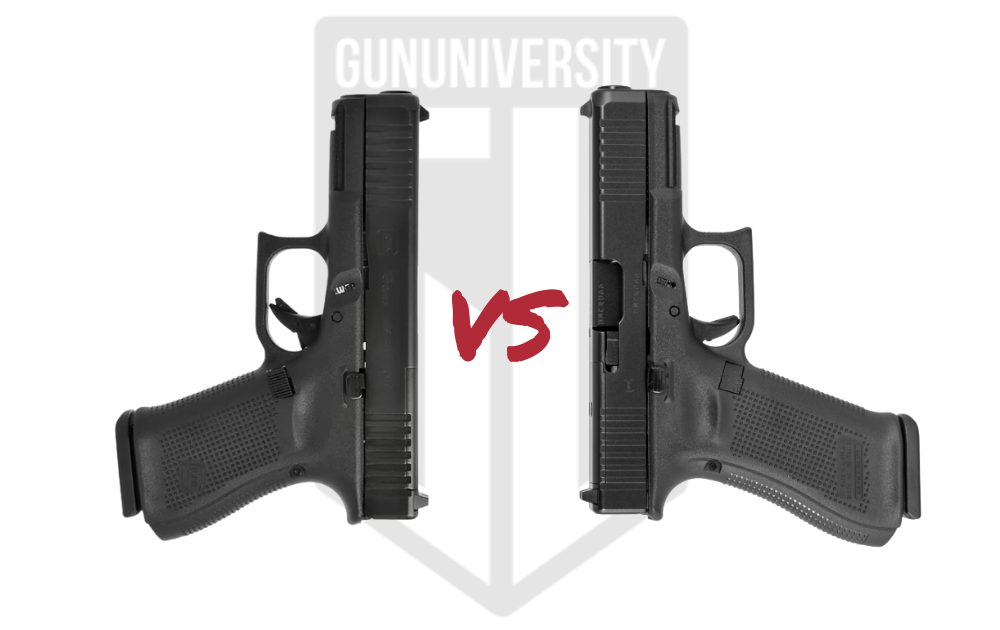
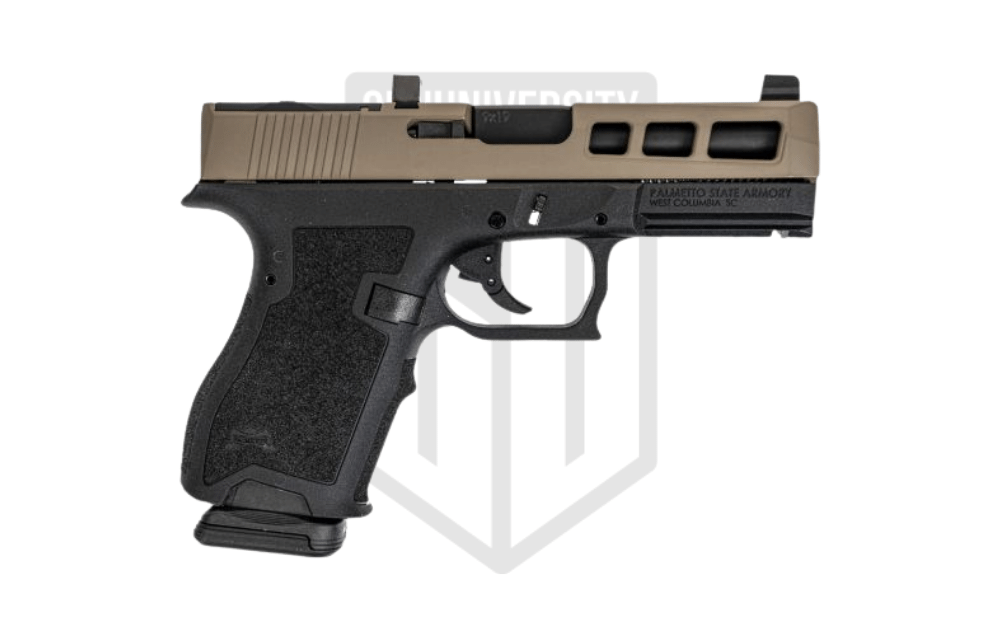
![7 Best Short-Barreled Shotguns in 2025 [Our Picks]](https://gununiversity.com/wp-content/uploads/2025/01/Short-Barrel-Shotgun.jpg)